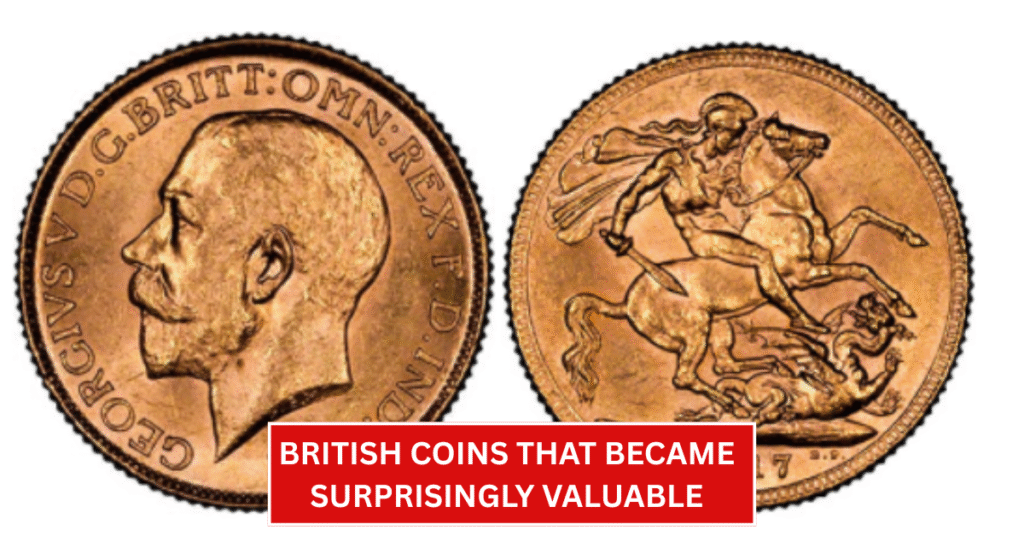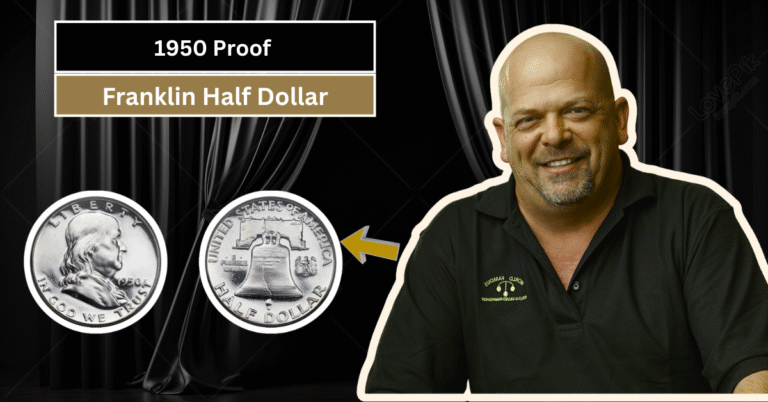
Coins often tell stories about history, culture, and the economy. Some British coins, although once common, have become rare treasures today. This happens when coins are withdrawn from circulation but remain in demand among collectors and enthusiasts. Understanding these coins can be exciting, especially if you come across one unexpectedly!
In this article, we will explore seven British coins that gained value long after they stopped being used as money. From the mysterious 1933 penny to the rare Edward VIII pattern coins, and special commemorative coins that were pulled from circulation, these coins have fascinating backstories. Let’s dive in and discover why they are so valuable now.
The 1933 Penny: A Penny That Cost a Fortune
This Article Includes
- 1 The 1933 Penny: A Penny That Cost a Fortune
- 2 Edward VIII Pattern Coins: The King Who Never Ruled
- 3 Withdrawn Commemorative Coins: Treasures Hidden in History
- 4 1937 Edward VIII Pattern Penny
- 5 1948 Bronze Penny: The Last of Its Kind
- 6 1970 Decimal Halfpenny: The Withdrawn Coin
- 7 1937 George VI English And Scottish Penny
- 8 Conclusion: Why These Coins Matter Today
The 1933 penny is one of the rarest British coins ever made. Only a few of these pennies exist because very few were minted that year. The Royal Mint actually didn’t officially produce pennies for 1933 because there were enough left from previous years.
What makes the 1933 penny special is its rarity. Only a handful were made for ceremonial reasons, such as to be placed under foundation stones during building ceremonies. Because so few exist today, these pennies are highly prized by collectors and have sold for thousands of pounds at auctions.
Edward VIII Pattern Coins: The King Who Never Ruled
Edward VIII was king for less than a year and abdicated before official coins with his image could be released. However, a few pattern coins (test coins) with his portrait were made. These include pennies, half crowns, and other denominations featuring his profile.
Since they were never officially circulated, Edward VIII pattern coins are extremely rare. Collectors consider them quite valuable because they represent a unique moment in British history – a king who never officially took the throne. Owning one of these coins is like holding a small piece of a royal mystery.
Withdrawn Commemorative Coins: Treasures Hidden in History
Over the years, Britain has released many commemorative coins to celebrate special events or anniversaries. Sometimes, these coins were withdrawn from circulation due to errors or changes in plans. Despite their withdrawal, many of these coins later became valuable collectibles.
One example is the 1927 “Armistice” half crown, issued to mark the end of World War I but withdrawn because it was deemed too similar to older coins. Coins like this are rare because few were released, making them exciting finds for collectors and history lovers alike.
1937 Edward VIII Pattern Penny
The 1937 Edward VIII pattern penny, made as a trial coin, holds special value due to its unique portrait and the king’s short reign. This coin was never put into general circulation, making it highly collectible today.
Usually, pattern coins like this are sought after by serious coin collectors who appreciate their rarity and historical significance. If you ever come across one, it’s worth getting it appraised.
1948 Bronze Penny: The Last of Its Kind
The 1948 bronze penny marks a turning point in British coinage. After that year, pennies were minted in different compositions. The 1948 penny was the last to be made using bronze, which adds to its appeal among collectors.
This coin may not look very special at first glance, but its position in history makes it valuable. Collectors prize it as it closes a chapter in the story of British currency.
1970 Decimal Halfpenny: The Withdrawn Coin
The 1970 decimal halfpenny was introduced but soon withdrawn from circulation. It was a small coin and was not widely accepted, so the Royal Mint decided to stop producing it shortly after its release.
Its brief life and limited numbers make the 1970 halfpenny noteworthy. Collectors often seek this coin because of its rarity and the story behind its withdrawal, symbolizing a change in British currency.
1937 George VI English And Scottish Penny
In 1937, coins were minted with two different designs for England and Scotland. The Scottish penny has a lion on one side while the English penny features a different design. Both were circulated, but the Scottish penny is scarcer in comparison.
The Scottish penny is especially valuable because fewer of them were made and kept in collections. This difference makes the coin an interesting collector’s item that celebrates the cultural diversity of the United Kingdom.
Conclusion: Why These Coins Matter Today
These seven British coins have all become valuable because they are rare or represent unique moments in history. Whether it’s the almost mythical 1933 penny or the withdrawn Edward VIII coins, each piece carries a story of its time. Collectors and enthusiasts value them both for their history and their scarcity.
For young readers and newcomers to coin collecting, learning about these coins is a great way to connect with history and maybe even inspire a hobby. If you ever find an old British coin, it might just be one of these rare treasures!






